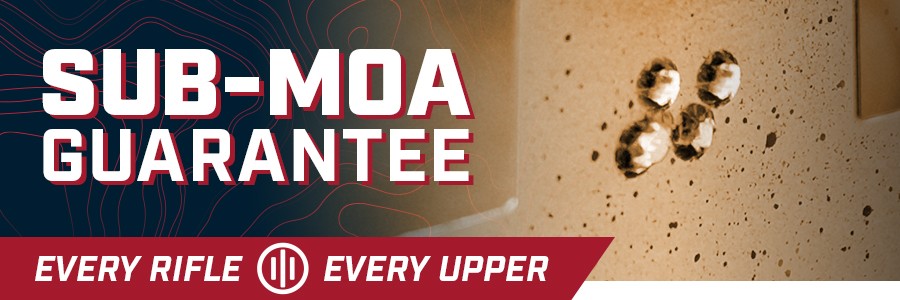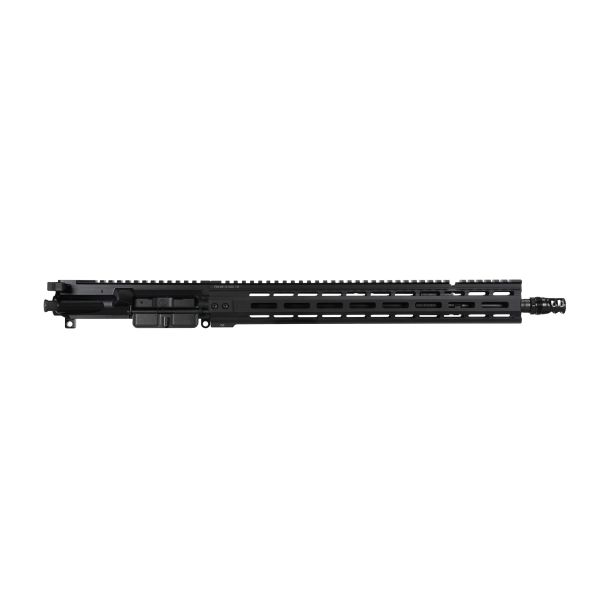MK116 MOD 1-M Upper .223 Wylde

The MK116 MOD 1-M Upper is equipped with the renowned PWS PWS long-stroke piston system, maintaining the reliability that PWS owners have come to trust. This line features a free-float MLOK handguard, forward assist controls, and a design closer to mil-spec standards, catering to civilians and Law Enforcement alike. With fully forged upper and lower receivers, the MK1 MOD 1-M offers a straightforward solution for those seeking a high-value option that delivers unwavering performance in any situation.
Highlighted Features
-
Sub-MOA Accuracy Guarantee: Experience Sub-MOA accuracy with high-grade ammo, thanks to our Boise made precision barrels.
-
PWS Long Stroke Piston System: Renowned for reliability and reduced fouling, with adjustable gas settings for optimal performance.
-
Forward Assist Integration: Essential for reliable chambering of rounds, particularly in adverse conditions, ensuring seamless operation and increased reliability for shooters.
-
Suppressor Optimized: Provides enhanced suppressor performance by minimizing back pressure, reducing gas blowback, and optimizing gas flow for a cleaner and more comfortable shooting experience.
-
.223 Wylde Chambering: Meticulously designed for outstanding accuracy and reliability, accommodating both .223 Remington and 5.56mm NATO.
-
Lightweight Design: The MK116 upper weighs just 4.8 lbs, ensuring superior maneuverability without compromising performance.
-
Barrel: 16.1" .223 Wylde barrel with a 1:8 twist rate, delivering exceptional accuracy and versatility when firing both .223 Remington and 5.56mm NATO rounds.
-
Fully Forged Receiver: Forged 7075-T651 Aluminum upper and lower receivers for durability and strength designed to mil-spec standards, ensuring compatibility and familiarity for users.
-
Free-float MLOK handguard: Offering improved handling and accessory mounting options.
-
PWS FRC 2-Port Compensator: A suppressor compatible compensator that expertly mitigates recoil, muzzle rise and is compatible with the Rearden Atlas suppressor mounting system.
-
Radian Raptor™ Ambidextrous Charging Handle: Ensures smooth operation for both left and right-handed shooters.
-
The PWS VOW: Our warranty for all PWS products, guaranteeing repair or replacement for any defects or issues, ensuring your complete satisfaction.
What Are Other's Saying About PWS Rifles?
More Information
| Serialized Item | No |
|---|






